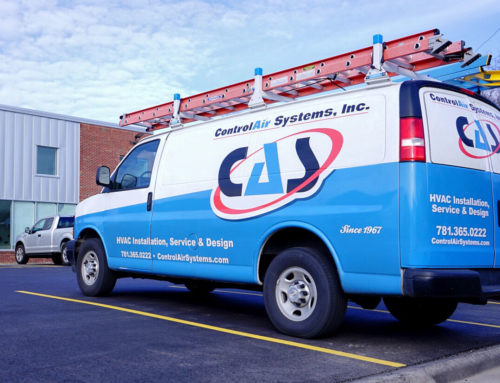Server Room Air Conditioning: How much do I need?
Winter lingered for quite a while in the Greater Boston area, but temperatures will be rising soon and a main concern for many commercial businesses will be the temperature of their IT/server room. Even during cooler weather, a server room can easily reach temperatures of over 100 degrees Fahrenheit, which can lead to downtime, loss of data, and equipment damage. Read on to learn more about proper server room maintenance and how you could save yourself time and money by avoiding costly IT issues.
Why does the server room need additional cooling?
Depending on how extreme temperatures get, a server room that is not getting the appropriate air conditioning could cause fragile IT equipment to fail and ultimately shut down. This can last for a couple of minutes, or as long as a few hours. Unexpected shut-downs can have both short and long-term effects:
- Sudden loss of connection to your server room can cause you to lose important data
- IT Equipment overheating even one time can shorten its lifespan
- Each minute a business is offline could lead to missing out on crucial communication with current and potential customers
So, how cool should my server room be?
The ideal temperature of a server room is an actively debated topic that has not yet reached a true consensus. Temperatures, standards, and designs will vary from facility to facility, resulting in varying heat loads in your server room. Humidity levels also range and can have a significant impact on the efficiency and health of your IT room.
Ultimately, the temperature standards should be determined by the team that engineered the system serving your particular building. However, below are a couple of guidelines to give you an idea of where your server room should be:
- According to the American Society of Heating, Refrigeration and Air Conditioning Engineers (ASHRAE) sufficient temperatures can range between 64.4° and 80.6°.
- An ideal humidity level should fall in the range of 40% and 60% rH to avoid corrosion due to too much humidity or static electricity build-up due to not enough.
Once you find the best temperature and humidity levels, here are some other things to be aware of to keep your server room in working order:
- It is common practice for business owners to conserve energy and money by shutting off their commercial HVAC system on weekends. Server rooms need constant and consistent temperature and humidity control. Therefore, cooling units should never be completely shut down.
- Beware of “hot spots”. These occur when heat gets trapped behind server racks or near large pieces of equipment. The room’s overall temperature and humidity may be set to the right levels, but hot spots can still cause trouble for equipment.
- Server rooms should have their own independent cooling control separate from the rest of the office or building. The main reason for this is that a rooftop unit will supply heat in the winter, which should not reach your server room. Ideal server room conditions also often differ from comfortable working conditions for employees.
Server outages due to overheating is easy to avoid with the correct precautions, starting with installing the right server room cooling units. Our technicians are experts in installing all brands of air conditioning in computer rooms including Liebert and Mitsubishi cooling units. To avoid IT issues in the future, regular preventative maintenance for your cooling system is highly suggested. If you have any questions about air conditioning for a server room, or would like to learn more about our maintenance plans, please don’t hesitate to give us a call at 781-365-0222 or e-mail info@controlairsystems.com!


